I’m a good comic reader since I was young. I have a lot of comics, mainly Marvel, and I would like a way to easely catalog them a browse when needed. For this reason I would like to create an app where to add and catalog them. Let’s start then from the smaller concept possible: a table on a datatbase (SQL Server) defining a first embrional concept of Comic like the below:
- ID: identifier unique
- Series: name of the Comic serie
- Title: title of the specic comic
- Number: progressive number of the comic within the Series
I’m creating this on an empty SQL Database calog and in a Table named “Comic”

Let’s move now to VisualStudio 2019 IDE to create the Web API Project

I will name the project XinCataLogAPI
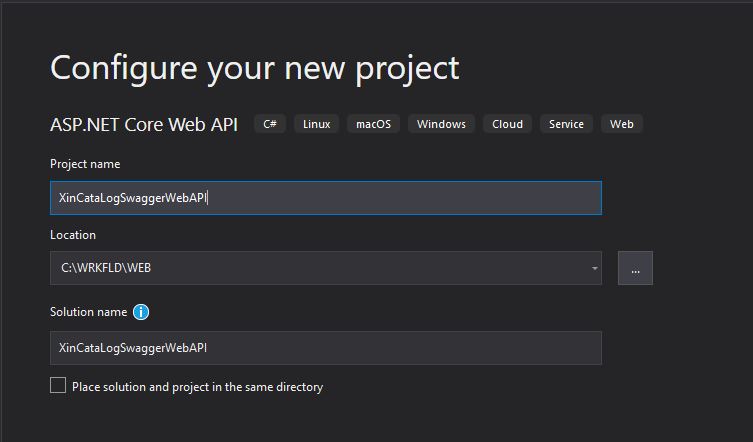
As target Framework I’m chosing the 5.0 which is the current one, for the moment I’ll leave the Authentication Type to None (I see on the web multiple example which are not using it)
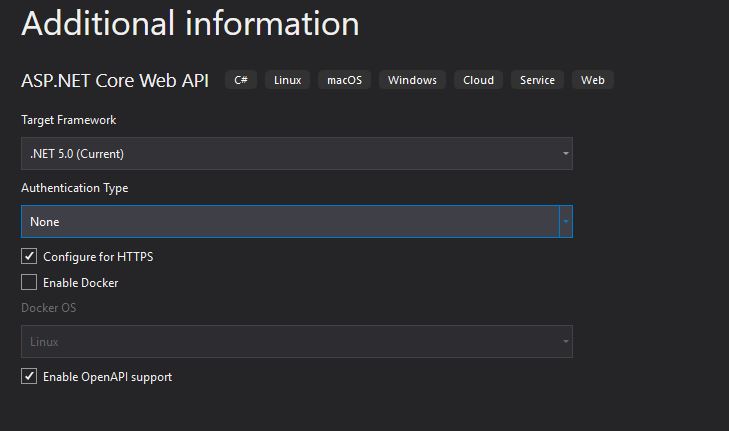
Ok, now the empty projet is created with a demo class WeatherForecast to demonstrate it can work. Let’s run then the project and here we go:
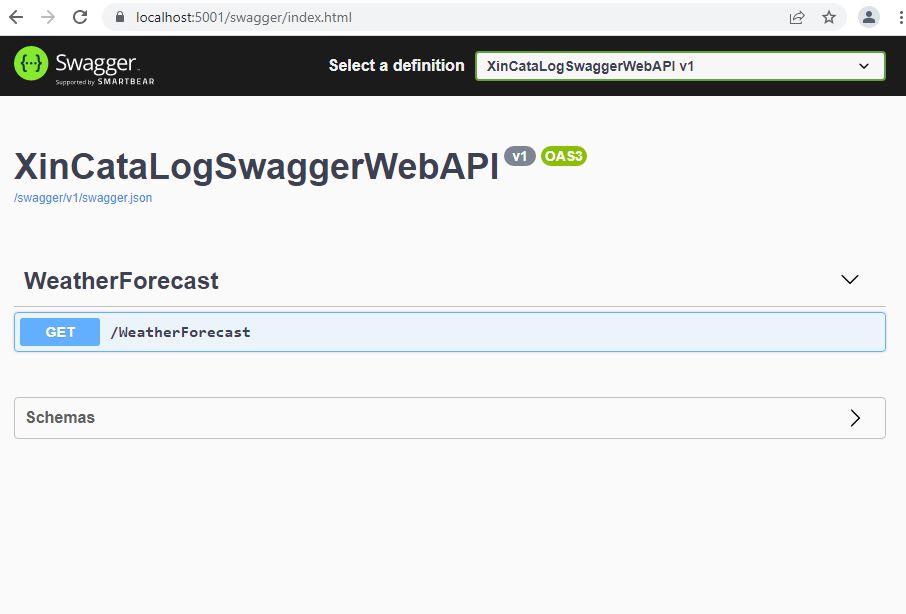
We have the Swagger repesentation for our WebAPI, of course the methods are just a demo, but as starting point this is cool enough.
Let’s add the project to the GitHub repository to ensure have a Source Control repository where to push and pull the versions. This is just a seiggestion but I strognly recommed to push a checkpoint all the time you have a version stable enough so you are able to comeback in case something you did (even unintentionally) mess-up your work. Since we need to play with the EntityFramework to retrieve and manage the CRUD operation on SQL Server I will add the NuGet related package taking care of the latest compatible version.
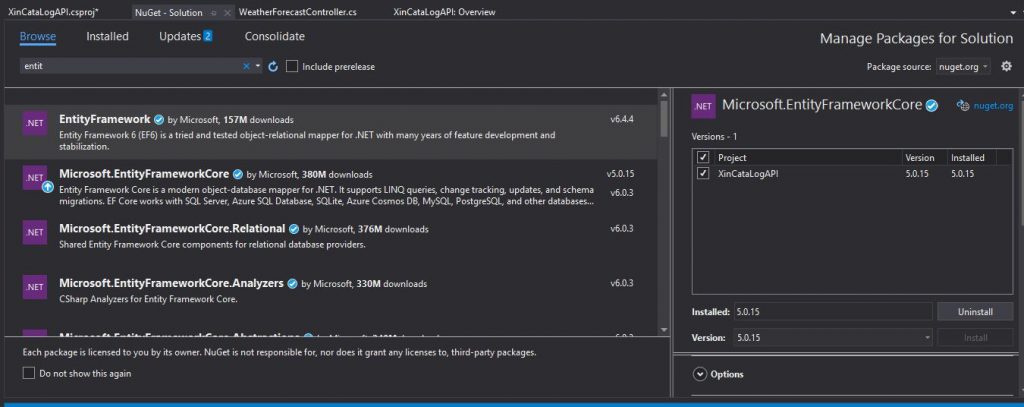
Then we need to do this also for the packages of Tools and SQLServer. After this the full list of packages installed should be the below:
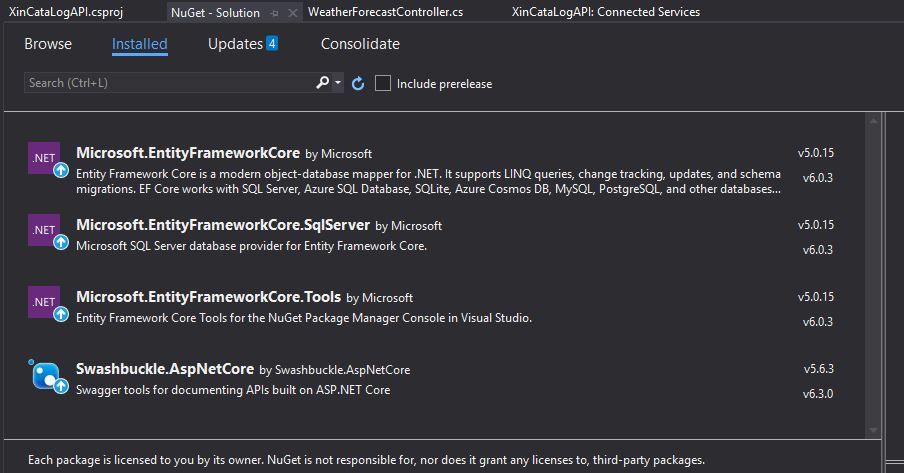
In the past I remember I played with an useful wizard to work with Database First approach, which basically generate a Data model starting from the Database I need to work with. Unfortunately I was not able to retrieve it and looks like this is because with .NET Core there is no way to add ADO Entity Model ad object [1]. Anyway there is the possibility to do the same leveraging on some command on the Package Manager Console. Let’s open it then and add the following command:
Scaffold-DBContext "Server=WIN-7O15VR47QA6;Database=XinCataLog;Trusted_Connection=True;" Microsoft.EntityFrameworkCore.SqlServer -OutputDir "Models" -Tables XinComic -f This command tells which entities (in this case only the XinComic) to scaffold in the Models directory and you can see below the result.

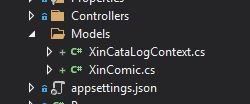
The XinCataLogContext class is the one which is used to communicate with the Database, while the XinComic is the entity representing the Database table.
Tipically an API can provide the basic functionality to access to Database objects and more in details the four main HTTP methods (GET, PUT, POST, and DELETE) can be mapped to CRUD operations as follows (see also here [2]):
- GET retrieves the representation of the resource at a specified URI. GET should have no side effects on the server.
- PUT updates a resource at a specified URI. PUT can also be used to create a new resource at a specified URI, if the server allows clients to specify new URIs. For this tutorial, the API will not support creation through PUT.
- POST creates a new resource. The server assigns the URI for the new object and returns this URI as part of the response message.
- DELETE deletes a resource at a specified URI.
Since we have already a Model class created as above we can now move to create a Controller to implement the functionality above. To this let’s click on the Controller Folder and add a new controller like below
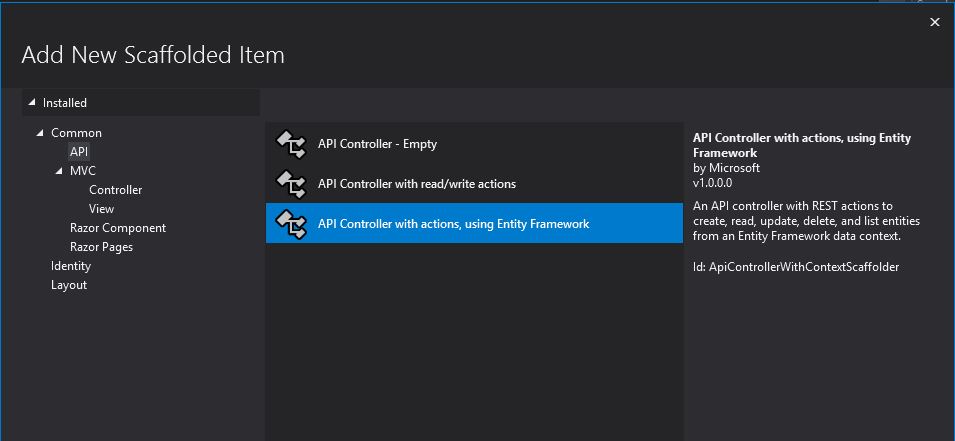
In the modal opening I just need then to specify the Model and the Repository created before
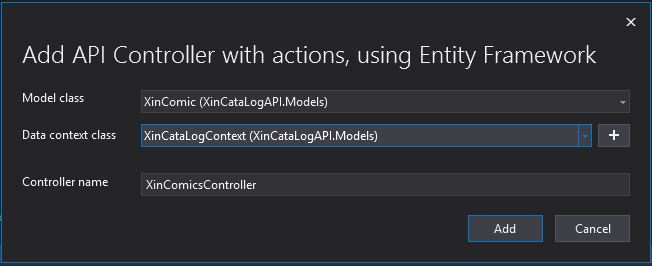
Then, after some actions from the wizard you should get the Controller correctly created.
Actually the first time I did it I got a weird error “Unhandled exception. System.IO.FileNotFoundException: Could not load file or assembly ‘Microsoft.VisualStudio.Web.CodeGeneration.Utils, Version=5.0.2.0, Culture=neutral, PublicKeyToken=adb9793829ddae60’. The system cannot find the file specified. File name: ‘Microsoft.VisualStudio.Web.CodeGeneration.Utils, Version=5.0.2.0, Culture=neutral, PublicKeyToken=adb9793829ddae60′” which fortunately I solved with the help of StackOverflow [3]. If it is not the case for you better, otherwise this fixed the issue for me.
Here we go, now in the controller folder I have a all the CRUD operation for my Comic:
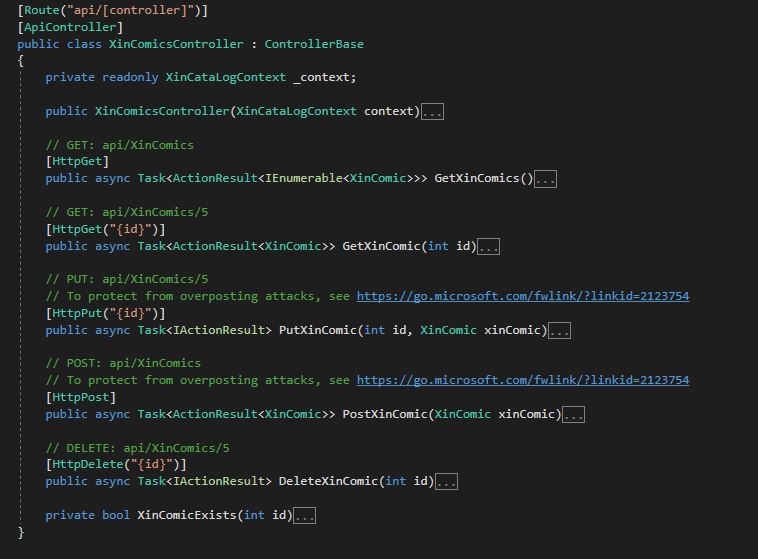
Well we should be almost there but if run the application we do find the new methods within the Swagger interface
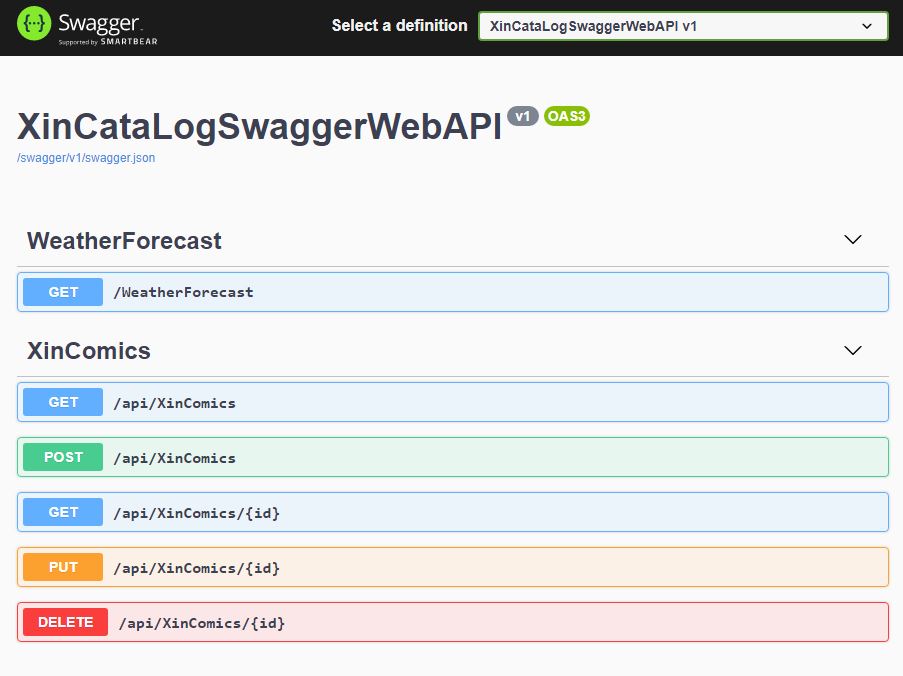
but if we run the get method we got an error:
System.InvalidOperationException: Unable to resolve service for type 'XinCataLogSwaggerWebAPI.Models.XinCataLogContext' while attempting to activate 'XinCataLogSwaggerWebAPI.Controllers.XinComicsController'.which is meaning that we have an issues with the initializzation of the XinCataLogContext. Actually we didn’t register the DataContext within the services and also described here [4].
// This method gets called by the runtime. Use this method to add services to the container.
public void ConfigureServices(IServiceCollection services)
{
services.AddDbContext<XinCataLogContext>(options =>
options.UseSqlServer(Configuration.GetConnectionString("DefaultSQLServerConnection")));
services.AddControllers();
services.AddSwaggerGen(c =>
{
c.SwaggerDoc("v1", new OpenApiInfo { Title = "XinCataLogSwaggerWebAPI", Version = "v1" });
});
}The first line of the method is registering as DBContext the one we generated with the Scaffold-DBContext. Now before run again the aplication let’s add a connectionstring in the appsettings file to ensure the connection string is the right one.
"ConnectionStrings": {
"DefaultSQLServerConnection": "Server=WIN-7O15VR47QA6;Database=XinCataLog;Trusted_Connection=True;"
}That’s it: if you now run the app and try the methods they are working good: we got the first API (with swagger) basically writing only coupleof line of code: the large part of the actions are done by VisualStudio.
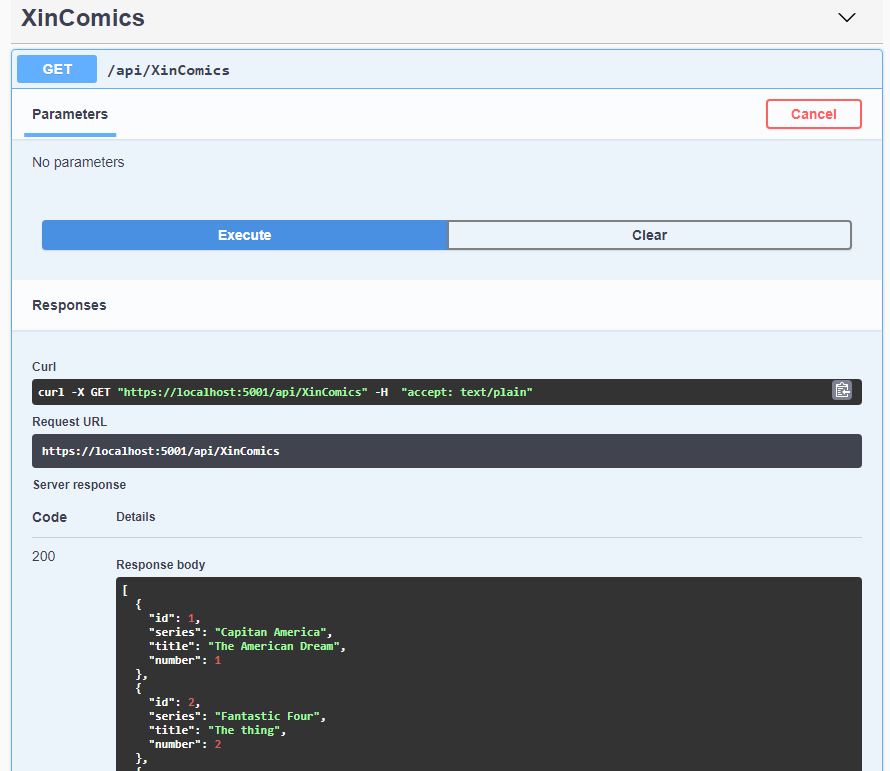
[3] https://stackoverflow.com/questions/45139243/asp-net-core-scaffolding-does-not-work-in-vs-2017
